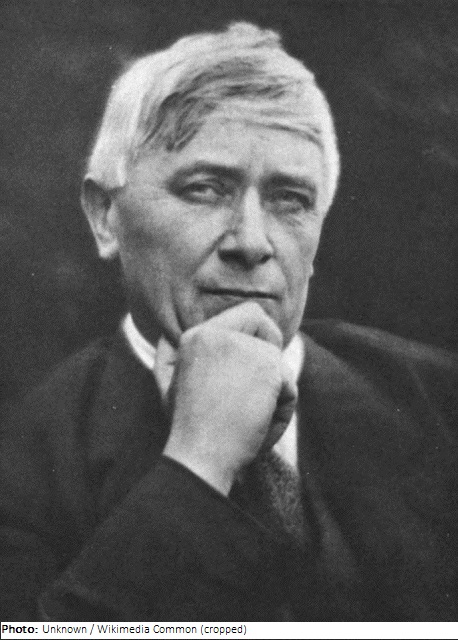Maurice Maeterlinck

Biographical information
| Roles | Referee |
|---|---|
| Sex | Male |
| Full name | Maurice Polydore Marie Bernard•Maeterlinck |
| Used name | Maurice•Maeterlinck |
| Born | 29 August 1862 in Gent (Ghent), Oost-Vlaanderen (BEL) |
| Died | 6 May 1949 (aged 86 years 8 months 8 days) in Nice, Alpes-Maritimes (FRA) |
| Title(s) | Comte (Count) |
| NOC |  Belgium Belgium |
Biography
Maurice Maeterlinck was a Belgian writer and playwright of the French language. His works the essential testimonies of Symbolism with his lyrical works and plotless, gloomy-pessimistic dramas. They often focus on man and his helplessness in the face of death.
Maeterlinck was born into a wealthy French-speaking family. In 1881, he enrolled in the law faculty of Gent University. At the same time, he started writing poems and short stories, which he later destroyed, however. After graduating from law school in 1885, he lived in Paris for a few months, where he met members of the new literary movement of Symbolism. For a few years, he then worked as a lawyer in Gent and, in parallel, published poetry.
The literary breakthrough came in 1889 with his first play, Princess Maleine, receiving a euphoric reception from critics. Maeterlinck’s most widely known play, Pelléas and Mélisande (1892) was set to music several times, including as an opera by Claude Debussy (1862-1918).
In 1896, Maeterlinck moved to Paris together with actress and singer Georgette Leblanc (1869-1941). The couple staged plays by Shakespeare and Maeterlinck himself. An essayistic observation on nature, The Life of the Bee (1901), proclaimed the omnipresence of nature. With the general public, he finally achieved his breakthrough with the play Monna Vanna (1902). A major international theatrical success was the fairy-tale drama The Blue Bird (1905). It was staged by famous directors like Konstantin Stanislavski (1863–1938) and Max Reinhardt (1873-1943). When Maeterlinck received the Nobel Prize for Literature in 1911, he was one of the most performed playwrights of his time.
During World War I, Maeterlinck retired to Nice. In articles and speeches, he condemned the previously admired Germans and praised the resistance of Belgium. Under the impression of the war, he wrote _ Le Bourgmestre de Stilmonde_ (The Mayor of Stilmonde), a war propaganda drama. In 1919, he married French actress Renée Dahon (1893-1969).
Although Maeterlinck had previously been flirting with socialist ideas, he traveled to Italy in 1923 setting high hopes for the Fascist movement. After a break of five years without writing a new work, in 1927, he started publishing 12 volumes of essays on entomology, but also on mysticism and extrasensory perception. For one of them, however, was accused of plagiarism.
In 1930, Maeterlinck purchased a castle in Nice, which he called “Orlamonde”. It was later run as the Palais Maeterlinck hotel until 2008. After receiving the Belgian Order of Leopold in 1920, he was ennobled and made a count in 1932.
Before the outbreak of World War II, he traveled to Portugal in 1939, to meet his friend, dictator António de Oliveira Salazar (1889-1970). From there, Maeterlinck emigrated to New York in 1940, where he lived until 1947. He died two years after returning to Nice.
Referee
| Games | Sport (Discipline) / Event | NOC / Team | Phase | Unit | Role | As | |
|---|---|---|---|---|---|---|---|
| 1924 Summer Olympics | Art Competitions |  BEL BEL |
Maurice Maeterlinck | ||||
| Literature, Open (Olympic) | Final Standings | Judge |